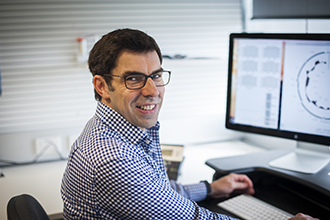Melanoma is a type of skin cancer that arises in skin cells called melanocytes.
Melanocytes sit in the top layer of skin, called the epidermis. They produce a pigment which gives skin its colour and helps protect against ultraviolet (UV) damage. When melanocytes group together in clusters, they form a non-cancerous mole.
Occasionally melanocytes begin to grow abnormally and form a melanoma. Melanoma usually occurs on parts of the body that are exposed to the sun, but rare cases occur in body parts that receive less sun exposure, such as the inside of the mouth.
Melanoma is a rare type of skin cancer, but it is the most deadly. Melanoma is particularly dangerous because it can invade deeper layers of skin and spread to other parts of the body like the lung, liver and brain.
Excluding less deadly types of skin cancer, melanoma is the third most common cancer diagnosed in Australian men and women.












